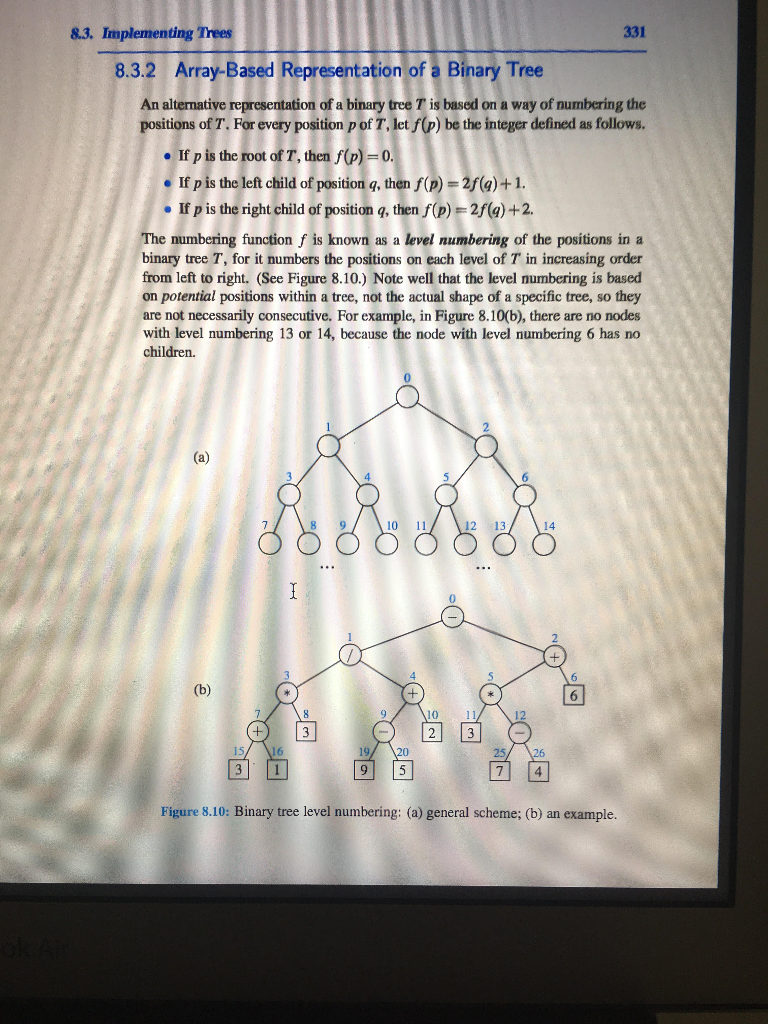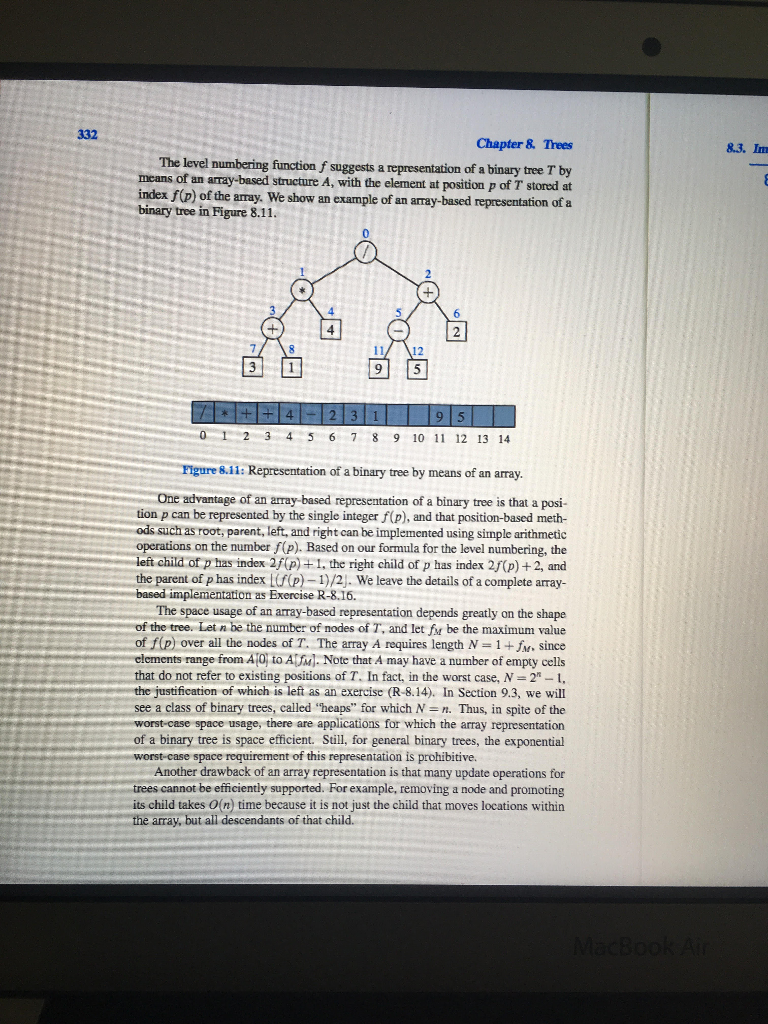Answered step by step
Verified Expert Solution
Question
1 Approved Answer
Let T be a binary tree with n positions that is realized with an array representation A , and let f () be the level
Let T be a binary tree with n positions that is realized with an array representation A, and let f () be the level numbering function of the positions of T, as given in Section 8.3.2. Give pseudocode descriptions of each of the methods root, parent, left, right, isExternal, and isRoot.
Section 8.3.2:


Step by Step Solution
There are 3 Steps involved in it
Step: 1

Get Instant Access to Expert-Tailored Solutions
See step-by-step solutions with expert insights and AI powered tools for academic success
Step: 2

Step: 3

Ace Your Homework with AI
Get the answers you need in no time with our AI-driven, step-by-step assistance
Get Started


